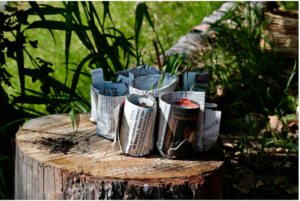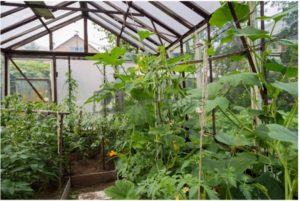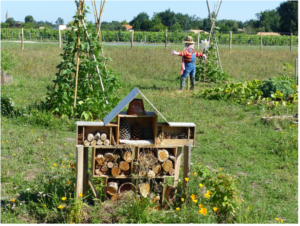A New Way to Garden this Spring?

At the tail end of winter, it’s tempting to imagine the possibility of a new wave of gardening catching on this spring. Can we imagine streets and communities full of native plants and flowers, sunshine, busy with butterflies and bees?
More than almost any other action that individuals can take, gardening has multiple benefits for our own health and that of the environment. And if we do it together it will strengthen our community as well. We here at Possible Rochester | Possible Planet are dreaming of whole neighborhoods coming outside this spring and getting busy in our gardens; just imagine neighbors side by side, reconnecting with nature in the very best weather of the year!
| ColorBrightonGreen.org, a non-profit organization, supports business, municipal, school, and residential energy reduction measures in our town, in concert with climate protection efforts by other towns and cities across the country. The organization sponsors A Pollinator Presentation: Planting Native for a Healthier Lawn and a Happier Family. |
For some of us, it could mean a complete make-over, while for others it might just mean adding edges and islands of native plantings while transitioning (we hope!) to an all-organic lawn. Either way, it’s a welcome opportunity to get outside and get reconnected with the Earth.
There’s a larger purpose to this as well. Many of us are increasingly concerned with the loss of vital pollinator plants and other species that are essential elements in our own food chain. Have you noticed how there haven’t been all that many bees and butterflies around? To prevent further species loss, we need to have our yards and lawns be naturally biodiverse habitats again. And it’s a win-win: Polyculture borders and islands are attractive and are also natural habitats that can help restore our beneficial insect population.
 Gardening itself is satisfying, bringing us fresh air and an opportunity for movement, as well as the satisfaction of getting our hands in the dirt and doing something good for the planet. And it turns out that re-greening whole neighborhoods, growing fruit trees and wildflowers on every square inch of exposed soil, is profoundly uplifting for the residents also. It revives both the land and our spirits, at many levels.
Gardening itself is satisfying, bringing us fresh air and an opportunity for movement, as well as the satisfaction of getting our hands in the dirt and doing something good for the planet. And it turns out that re-greening whole neighborhoods, growing fruit trees and wildflowers on every square inch of exposed soil, is profoundly uplifting for the residents also. It revives both the land and our spirits, at many levels.

A city-wide or town-wide campaign to beautify neighborhoods can also be a campaign to restore natural ecosystems so as to better support life. We can bring back an abundant pollinator insect population, with micro-gardens and micro-forests, if enough of us are willing to make it happen.
Here’s what it will take:
- If we own property, we undertake at least one restorative/regenerative project
- If we’re good at sharing the opportunity, we contact our neighbors and friends
- If we’re interested, we can help organize the neighborhood or the community
- By joining existing groups or forming new ones
- Where we can share permaculture garden tips, discuss community-wide shifts, and increase our own resilience
Along the way, we’ll want to make sure to share a sense of the joys of nature, of reimagining the world as a garden again, with a new vision of nature-based urban architecture, and of joining and forming new communities focused on “light” and Life.
Healing the Earth is also a way to begin healing ourselves, addressing the traumas (which may be deeply buried within us) of modern history, cleaning the air, creating drinkable rivers, restoring the soil, and refreshing our own sense of meaning and purpose in the world.
| Healthy Yards Monroe County Healthy Yards Monroe County is a cross-town team of neighbors. We see a pressing need to encourage residents to participate in a fun effort – in their own yards – that will help restore our community’s biodiversity, ecological health, and beauty. The more yards that join, the more connected these healthy greenspaces will become. Our villages and towns can continue the connection by upgrading our public grounds and parks to include native plantings. |
At Healthy Yards Monroe County, you can see tips and guidelines for redesigning your yard for the benefit of wildlife, and register your garden. The group’s recommendations, broadly supported by both the town and the county, include:
- Reducing your lawn area
- Identifying native and keystone trees (e.g., oak, birch, and cherry)
- Choosing a diversity of native plants
- Learning best practices for lawn maintenance
- Learning to identify and remove any herbaceous and woody invasive plants in your yard
What if we were able to recover our intrinsic harmony with nature—to become fully beneficial participants in the maintenance and expansion of life? Can we see ourselves as overcoming and possibly even redeeming our past, seeing it as simply a stage in our evolution as a species that can now assume its role of stewardship and service on what Thomas Berry calls “this garden Earth”?
Having a message that resonates with all sorts of people is clearly essential. The world we want is possible, but only if a great majority of us embrace it, and it becomes central to who we say we are.
This new way of gardening arises from a different way of looking at the world—a way of looking that sees possibilities for self-renewal in the humblest clod of dirt and the smallest window box or roof garden. Grow food, for yourself, for the insects, and the birds—all at the same time.
Along with this, let’s open our minds to new possibilities, re-engage with our neighbors and friends in a new cause, and re-awaken new experiences of the Earth within ourselves. We have an opportunity, each Spring, to be a part of re-making our world. Let’s get out and plant some native things—some native trees and flowers, some hyperlocal food, and some native visions for a peaceful and flourishing world.
What do you think of this idea? We’d love to hear from you.
For more details, or to join us—and to share your own permaculture garden photos and stories—email us at team@possiblerochester.org.
“Beginning with the simple act of enriching our landscapes with organic matter and native plantings, we’re effectively restoring nature’s own capacity to reproduce and sustain life, with all the diversity and resilience that exists in the wild. Miraculously, life sustains life: without plants, we’d have no oxygen to breathe, without insects we’d have no plants and no food, the land would flood or dry up and we’d be unable to sustain ourselves. The simple act of gardening has now become a nonviolent revolutionary act that can help set the world back on the right track. Adopted by all of us it can restore abundant life on the planet and produce enough to meet the needs of everyone. Take a stand for the climate, and for the health and resilience of the neighborhood and the community—and have a healthy, positive, and uplifting experience while doing it.”
| Patty Love, Barefoot Ecological Design & Genesee Valley/Finger Lakes Permaculture & Resilience Meetup A critically important aspect of this is also growing some of our own food, says Permaculturist Patty Love, who also lives in Brighton. If we’re talking about what’s good for the climate, buying food at the supermarket is something we should try to minimize. Fruits and vegetables out of season typically travel thousands of miles to reach us and may have gone through chemical treatments to preserve their freshness and appearance. By contrast, we know everything that goes into the produce from our own garden, including our love for the soil and our appreciation of the bounty of nature. https://www.meetup.com/rochesterpermaculture/ https://barefootpermaculture.com/ |
The Call to Action
Clearly, we’re advocating for people to get out and make over their gardens, to bring back life and biodiversity into our immediate environment. We’re also inviting people to get in touch, with us and with other local nonprofits, and take a stand to grow the movement for land regeneration. We envision being part of a local community of volunteers, neighbors helping neighbors, both at the practical level and in expanding our own awareness and understanding of the larger situation. It’s a way of getting into the bigger conversation of Earth regeneration.
For the folks already doing some or all of what we’re talking about, we see you as hometown heroes and would like to feature your projects on PossibleRochester.org. We are most interested in:
- Visual examples of what can be and has been accomplished in the neighborhoods (before and after stories that we can feature on the .org site)
- Volunteers who might help us with the planting and the maintenance of the garden, and help organize other neighbors to take part
- We are also looking for financial contributions as well, to support the project and its expansion throughout the region
- We want to create an alliance of the aligned local efforts, ultimately expanding to look at the bioregion as a whole and what it needs to be functioning at optimal capacity both ecologically and socially, because we believe that in the end, it’s our common predicament that will bring us together, to heal ourselves and the biosphere from which we are inseparable.
- And in our own neighborhood, we want to increase our resilience and interdependence so that we can not just reduce our ecological footprint but indeed become partners with nature; after all, we live here, so why shouldn’t it be the most eco-aware community in the region?
In the process, we may be able to reactivate some of the many members of local groups who are not currently participating. We also want to coordinate this effort is with Healthy Yards Monroe County, Genesee Valley/Finger Lakes Permaculture & Resilience Meetup, Color Brighton Green, and the Seneca Park Zoo’s Butterfly Beltway Initiative, and align ourselves with the larger movements (Doug Tallamy’s, the re-wilding groups, Paul Hawken’s & others’ visions of re-forested cities, as well as the urban agriculture movement, including the Taproot Collective and the City Roots Land Trust, etc.).
But it all begins with bringing together the community. Paul Hawken talks about the work of regeneration being that of connecting people, projects, and systems; and in a recent Connections podcast with Evan Dawson which I think you’ll enjoy, Adam Frank and David Grinspoon talk about activating the Earth’s intelligence (i.e., us) to sustain life. We’re also becoming the fiscal sponsor for Earth Regenerators, which we think will have a major impact. But all these efforts depend on dialoguing and cooperating at multiple levels, and the foundation starts with the land we’re on.
Here are some additional resources and connections:
Homegrown National Parks™
An initiative that strongly parallels many others, as well as our own, is Doug Tallamy’s (https://homegrownnationalpark.org/).
Tallamy writes: “Chances are, you have never thought of your garden—indeed, of all of the space on your property—as a wildlife preserve that represents the last opportunity we have for sustaining plants and animals that were once common throughout the U.S. But that is exactly the role that built landscapes are now playing and will play even more in the near future…. Our National Parks, no matter how grand in scale are too small and separated from one another to preserve species to the levels needed. Thus, the concept for Homegrown National Park, a bottom-up call-to-action to restore habitat where we live and work, and to a lesser extent where we farm and graze, extending national parks to our yards… What if each American landowner converted half of his or her yard to productive native plant communities? Even moderate success could collectively restore some semblance of ecosystem function to more than 20 million acres of what is now an ecological wasteland.”
Rewild Long Island
MISSION
The mission of Rewild Long Island is to promote sustainable landscaping practices with a focus on native perennials, growing organic food and reducing waste.
GOALS
We encourage replacing lawns with native plant landscapes, increasing bio-diversity, locally grown organic produce, reducing waste through recycling and composting, conserving water, reducing carbon emissions and avoiding chemical use
Native Perennials: We work to introduce native plant based gardens in public and private spaces, transforming them into thriving micro-habitats for a variety of insects, bees, birds and butterflies. In addition, our mission is to educate the public at large the value of ReWilding, as well as to advocate for change in community practices and regulations. We seek to achieve the benefits of conserving water, using fewer chemicals & pesticides, as well as bringing more bees/birds/butterflies to our neighborhoods.
Organic Gardening: We also believe that locally grown healthy food enhances our health and our connection to the land. We encourage residents to grow food alongside their native plants that attract pollinators and use composted yard waste to mulch and fertilize gardens. We have also created strong partnerships with local organizations that focus on issues of food security and sustainability to help mitigate hunger in our community.
Reducing Waste: Our yards and kitchens produce a steady stream of organic and plastic waste that can be recycled and reused. We promote practices such as Composting, Vermiculture and Bokashi Fermentation to turn organic waste streams into valuable fertilizer for our gardens. Water is another precious resource, whose capture, retention and reuse is critical to sustainable landscaping. We also try to capture and re-use the plastic waste stream so that less of it needs to be manufactured.
What we´ve learned at Rewild is that it only takes a handful of like-minded to raise the awareness and inspire repair and restoration. Rewild is now ready to shift the cultural narrative away from perfectly maintained toxic spaces, towards responsibility and dedication to life-sustaining habits.
It starts with the very ground of our being, the Earth we all live on.
Rooted in the soil we grow, we now have more than 50 families dedicated to creating earth-friendly habitats in their yards.
—https://www.rewildlongisland.org/who-we-are